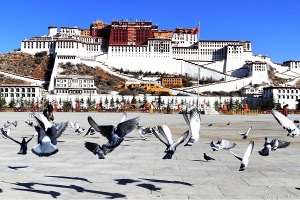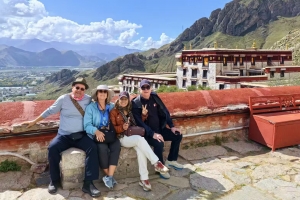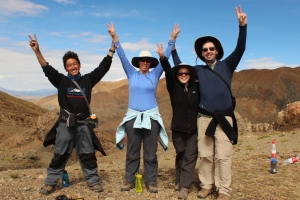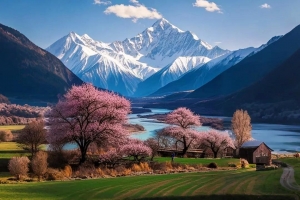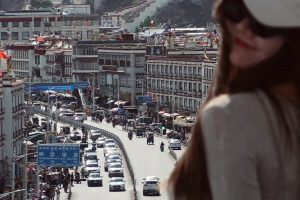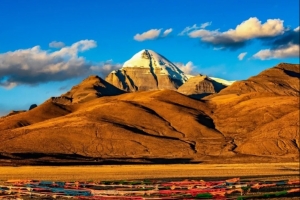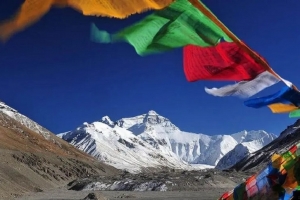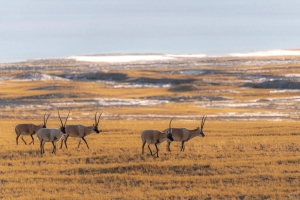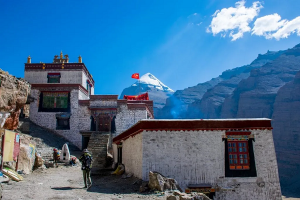Imagine boarding a train not merely for travel, but for a journey into the sublime – through high plateaus, across dramatic landscapes, into places where luxury meets the remote. That was the promise of the Tangula Luxury Train, a bespoke experience conceived in China to span Beijing to Lhasa (and another route to Lijiang) with all the trappings of a five-star hotel on wheels.
This article is designed specifically for international tourists, keen to understand what this train was, why it garnered so much attention, how it operated, where it is now (spoiler: it’s no longer running), and what alternatives exist today for that once-in-a-lifetime rail adventure on the roof of the world. In the final section, you’ll also find some practical pointers to planning a Tibet train journey.
What Is The Tangula Luxury Train? Basic Information & Train Routes
When the Tangula Luxury Train was conceived, the ambition was nothing less than to deliver luxury rail travel in China at its highest level – literally and figuratively.
Origins and Concept
The train was developed under a joint venture between investment/travel companies (including RailPartners Inc) and China’s railway entities (specifically the Qinghai‑Tibet Railway Co. or its predecessor). The design and construction were handled by a Chinese joint venture of the Canadian rail manufacturer Bombardier Transportation (via its joint venture BSP) so each carriage was lavishly outfitted. The hotel-brand luxury management was entrusted to the Swiss-heritage hotel group Kempinski Hotels.
Its name is derived from the Tanggula (or Tangula) mountain range / pass on the Qinghai–Tibet line: indeed part of the appeal was that the train would crest some of the highest rail elevations in the world.
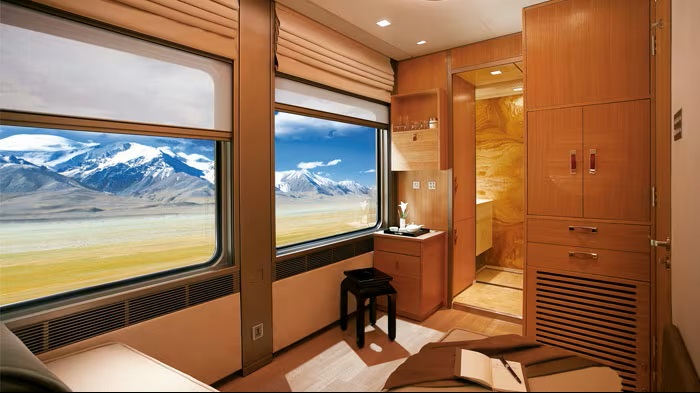
Tangula Luxury Train
Route Options
The project proposed two major routes:
- The Beijing → Lhasa (the “Northern Route”): a 5-day/4-night itinerary (with the reverse 4-day/3-night) travelling from Beijing, across the Chinese heartland, then onto the plateau, crossing the Qinghai-Tibet Railway corridor and ultimately reaching Lhasa.
- The Beijing → Lijiang (the “Southern Route”): designed also as a 5-day/4-night luxurious journey departing Beijing and heading into Yunnan province via the ancient and spectacular landscapes of southwest China.
On board these journeys, the passengers would have stops for off-train excursions, giving access to remote lake vistas, grasslands, ancient cultures, and more—rather than merely travelling from A to B.
Technical & Operational Highlights
The trains were built around 15 cars: including most notably accommodation suite cars, dining cars, and a scenic car (for panoramic viewing). Some facts:
- Maximum capacity around 96 guests, in 48 spacious suites: each suite typically housed two people.
- Each suite had ensuite shower, entertainment systems, minibar, safe; the train had onboard oxygen-enrichment system to cope with high altitude segments.
- Speeds planned up to ~160 km/h on suitable sections (as sometimes indicated).
- Luxury hotel-style service: 24-hour butler for each suite car, doctor on-board for altitude concerns, etc.
In short: this was not simply a passenger train, but a luxury experience that attempted to merge rail travel, world-class hospitality, and remote high-altitude scenery.
How Luxurious Was The Tangula Luxury Train?
For an international traveler accustomed to premium hotels and first-class experiences, the Tangula Luxury Train aimed to raise the bar—and in many respects it did.
Accommodation and Service
Each suite was designed like a hotel room on wheels: beds (either king or twin), seating/lounge space during daytime, ensuite shower & toilet, flat-screen TV and entertainment system, mini bar, safe and satellite internet (where available). Many press and financial reports quoted that each carriage (given the high end of fit-out) cost around US$3 million. On-board service included a bilingual butler, and staff trained to meet hotel-level standards. The presence of an oxygen-enrichment system addressed one of the unique challenges of the high-altitude rail route: when the train crosses altitudes of more than 5,000 m.
Dining, Social Spaces & Excursions
Meals onboard were curated by experienced chefs, offering both Western and Asian cuisine to suit international palate, accompanied by carefully selected wines, Champagne and fine spirits. Dining cars were spacious and designed to service all guests in comfort. There was also a scenic lounge car to relax and take in the panorama, a bar space, and off-train excursion programs built into the itinerary.
Scenic & Altitude Appeal
Aside from the luxury itself, a strong part of the appeal was the route: crossing the windswept Tibetan Plateau, seeing snow-capped peaks, lakes like Cuona/ Nam Co, the Qiangtang grasslands, passing the world’s highest railway station and mountain pass. This elevated the train journey from transport into an expedition.
For the luxury traveler, the combination of exclusive suite, superb service, dramatic scenery, and novelty of high-altitude rail made the Tangula Luxury Train a highly compelling – and unique – offering.
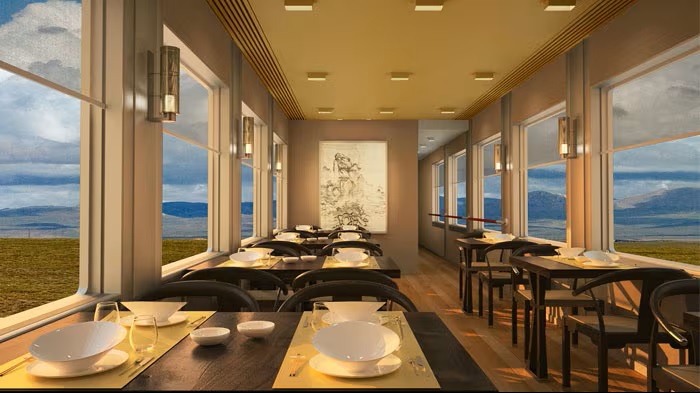
Is It Available To Take Right Now? Why Is It No Longer In Service?
Here lies the bittersweet chapter of the story: although the Tangula Luxury Train garnered interest, it never matured into sustained operation and ultimately was discontinued before ever achieving full commercial success.
Launch Delays and Operational Challenges
While the train was announced around late 2007 and early 2008—a launch date of September 2008 was mentioned by Chinese embassy press release. But then multiple reports of delays surfaced: for example the operator indicated that the launch was postponed to April 2009 to finalize operations and ensure the high-altitude segments were properly prepared.
The challenges were many: producing custom rolling stock, ensuring high-altitude systems worked reliably, coordinating with Chinese rail authorities, off-train excursion logistics, marketing to the very high-end segment, and of course managing cost.
Financial / Demand Realities
Despite the luxury fit-out and ambitious route, demand was limited: ticket prices were extremely high (around US$5,000+ per person for a Beijing → Lhasa trip). Meanwhile the operational costs for bespoke luxury rail service (cars, staff, maintenance, altitude systems, servicing remote route) were significant. The global financial downturn around 2008-2009 did not help.
As a result, the expected commercial volumes and sustained bookings did not materialize sufficiently to make the service viable long-term.
Formal Status: Discontinued
In short, the Tangula Luxury Train never achieved the stable, regular operations envisaged and the project was shelved (or essentially cancelled) before full commercial roll-out. Some materials indicate no regular luxury departures occurred, and the train remains a “project” in limbo rather than a ticket-bookable experience. For international travellers today, unfortunately this luxury train is not available to book.
It remains a fascinating footnote in luxury rail travel and China tourism history—an ambitious idea that for a variety of reasons didn’t come to full realization.
What Kinds of Tangula Train Options Are Available Right Now?
While the luxury Tangula service is no longer in operation, all is not lost—there remain very real train journeys in China that allow you to traverse the plateau on the route once intended for Tangula, and enjoy spectacular scenery at much lower cost (though without the hotel-suite luxury).
Regular Tibet Trains on the Qinghai‑Tibet Railway
For international tourists wanting to experience the high-altitude rail journey to Tibet, the Qinghai-Tibet Railway remains the main option. For example:
- Daily trains depart from Xining to Lhasa (via station near the Tanggula pass).
- The journey spans ~1,956 km and takes approximately 19.5 to 21.5 hours for certain services.
- Ticket classes vary widely: hard seats, hard sleepers, soft sleepers; though amenities will not match those of a luxury train.
- Because of the appeal of this route (often cited as one of the “once-in-a-lifetime” rail rides) tickets may sell out and booking ahead is strongly recommended.
Comparison: Luxury vs Regular
| Feature | Tangula Luxury Train (planned) | Regular Tibet Trains |
|---|---|---|
| Accommodation | Private suites, en-suite shower, butler, hotel-level service | Standard compartments, shared facilities, fewer luxury extras |
| Price | ~US$5,000+ per person for full itinerary | Much lower cost (hundreds to low thousands RMB) |
| Route & Stops | Luxury route with special excursion stops, scenic car, high comforts | Straight rail route with occasional stops; fewer luxury extras |
| Status | No longer active / commercially viable | Fully operational and accessible to tourists |
| Experience | Ultra-luxury, small group, exclusive | More mainstream, larger capacity, cost-efficient |
So, while you cannot board the Tangula Luxury Train as originally intended, you can still embark on a high-altitude rail adventure across the Tibetan Plateau. With good planning, it remains a truly memorable experience.
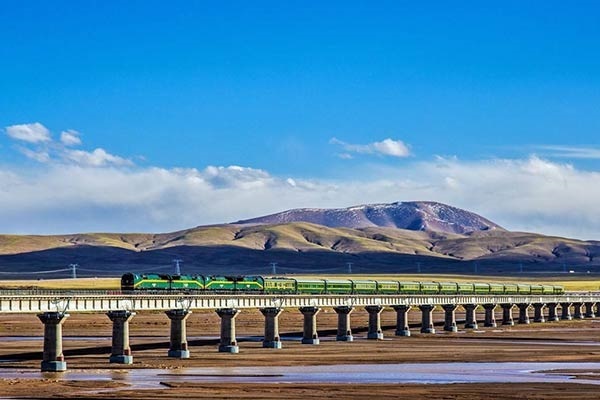
Qinghai–Tibet Train
The Qinghai-Tibet Railway Tour: A Lifetime Trip Experience
For international visitors seeking an extraordinary travel experience, a journey on the Qinghai–Tibet Railway is hard to beat. Here’s how to approach it, what to expect, and how to make the most of your trip.
Why It’s A Bucket-List Rail Journey
- You’ll ride across one of the highest railways in the world.
- The scenery is stunning: vast grasslands, crystalline high-altitude lakes, snow-capped peaks, remote stations, the Tibetan plateau’s unique atmosphere.
- You cross from the more familiar Chinese heartland into the remote, sparse, serene world of high-altitude Tibet—an immersive shift in geography, culture and mood.
- The journey itself becomes the destination: time to reflect, watch the landscape change, feel the altitude and the stillness of the plateau.
Planning Your Journey – Key Considerations
- Departure city and route choice
Many tours depart from major Chinese gateway cities: Beijing, Shanghai, Chengdu, Guangzhou. You could travel to Xining first, then board the train to Lhasa, or take other longer-distance routes. - Book early
Because of demand and limited capacity (especially for soft sleepers), it pays to plan ahead. Use reputable tour operators or booking platforms and verify your train number, seats/sleepers, and route carefully. - Altitude awareness
The train crosses altitudes exceeding 4,000 m and up to ~5,000 m in places. Even though on a train you are relatively protected, it’s wise to acclimatize, stay hydrated, avoid over-exertion on the first day in Lhasa, and consult travel med-info if you are concerned. - Comfort vs budget
The highest comfort comes from soft sleepers, air-conditioned compartments, etc. While you won’t get full “hotel suite on rails” luxury like the Tangula would have offered, you can still choose a very comfortable class. - Permits and travel documentation
If you are heading into Tibet, international tourists often require a Tibet Travel Permit as well as standard China visa. The train ticket purchase sometimes requires cooperating with a tour operator who holds the permit. - Stopovers & sightseeing
Consider adding a few days in Lhasa or at pre-stations (such as Xining) to acclimatize and explore. Use the rail journey as one leg of a broader Tibetan/Amazing China trip rather than just the transit.
What You’ll See & Experience
- The plains gradually giving way to more rugged terrain, high altitude desert, grasslands and lakes.
- Snow-capped mountain ridges, and potentially wildlife or nomadic herding scenes.
- High-altitude stations with an other-worldly feel—remote, sparse, dramatic.
- Arriving in Lhasa: the city offers spiritual, cultural and historical richness (monasteries, Potala Palace, Barkhor Street, etc).
- The contrast of being on the train during the daylight hours: panoramic windows give you constant shifting views, changing light, shifting climate.
Making Your Experience Unforgettable
- Choose a daytime seat or window berth for as much daylight vantage as possible.
- Pack layers: while inside the train you’ll be warm, the outside air in Tibet is cold, dry, high-altitude.
- Bring rated sunglasses, sunscreen, and a water bottle.
- Have binoculars or a good camera for the scenery.
- Don’t rush: this isn’t high-speed rail, it’s a scenic journey—allow yourself to savour it.
- Consider staying at least 1-2 nights in Lhasa after arriving to absorb the place.
- Work with an operator that can handle train tickets, permits, and local logistics—especially if you have limited time or language familiarity.
The Legacy Of The Tangula Luxury Train: Why It Still Matters
Even though the Tangula Luxury Train never achieved full commercial success or sustained operations, its story remains instructive and intriguing—for tourism, rail transport, luxury travel and China’s ambitions.
A Bold Experiment
The Tangula project symbolised China’s willingness to push into ultra-luxury rail travel: custom-built trains, high-altitude operation, five-star hospitality at speed, and targeting affluent international and domestic travellers. It showed how travel companies were exploring the frontier between transport and luxury experience. The financing alone (roughly US$140 million reported) underlined the scale of ambition.
Challenges of Ultra-Luxury in Remote Terrain
The lessons: remote routes impose high costs (maintenance, oxygen systems, altitude mitigation, bespoke carriages). Even affluent travellers may balk at ultra-high ticket prices. The terrain itself (plateau, extreme altitudes, harsh weather) complicates operations. Luxury does not always translate into profit if volumes are limited. The Tangula story is often cited as a example of “luxury travel meets geography & cost hurdles”.
Inspiration for Future Travel
While this particular train didn’t roll forward as hoped, the idea of combining rail, scenery and high-end service remains alive. For international travellers, the very existence of the Tangula concept amplifies awareness of the Tibetan rail journey as something special. And today’s regular Tibet-rail services benefit from the mythos of being “what the Tangula would have been”.
A Piece of Travel History
For rail enthusiasts, luxury-travel aficionados, and China-tourism watchers, the Tangula Luxury Train remains a “what might have been” story. It has its place in private brochures, specialised media and luxury travel archives. The fact that it aimed to traverse one of the world’s highest rail corridors—while offering hotel-suite luxury on rails—makes it an intriguing historical footnote.
Practical Tips For International Tourists Considering A Tibet Rail Journey
If you’re reading this as an international tourist planning to travel in China and perhaps into Tibet, here are some tailored tips inspired by the Tangula story—but grounded in current reality.
- Start in a major gateway city
Cities like Beijing, Shanghai, Chengdu or Guangzhou make good starting points. Spend 1-2 days there (adjust from jet-lag), then make your way to a departure station for the plateau route (commonly Xining). - Book train tickets early
Use a trusted travel partner or Chinese booking platform. Because of permit issues and demand, try to secure your preferred berth/class ahead of time. - Arrange Tibet travel permit early
For entering Tibet (if you plan to continue to Lhasa), you will need a Tibet Travel Permit. Make sure your travel operator handles this. - Choose the right class and time of day
Soft sleeper (if available) is more comfortable; if you value daylight scenery choose departure times that maximise daylight window. Even on “normal” trains, try to book a window seat/berth where possible. - Pack for altitude and scenery
- Layers: nights and early mornings are cold.
- Sun protection: the plateau sun is strong.
- Hydration: keep drinking water.
- Medications: if you might be sensitive to altitude, discuss with doctor.
- Eye-mask/ear-plugs: for quality rest, especially if the train is shared.
- Make sightseeing stops
Consider breaking your journey: spend a night in Xining or other stop before heading onto the plateau. After arrival in Lhasa, allow a couple of days for acclimatisation and local exploration. - Mind the luggage & station rules
Chinese railway stations have security checks; arrive in good time. Large luggage may be cumbersome on long routes; choose manageable size and keep essentials in your carry-on. - Be present and savour the ride
Many travellers rush to get to their destination; instead consider the rail journey itself as part of the experience. Watch the landscape shift, talk to locals (if you can), take photos, enjoy the change of pace. - Expect fewer luxury extras than Tangula promised—but still wow
While you won’t have a butler or en-suite shower on many plateau trains, you will still be on a fascinating route. Adjust expectations, but don’t undervalue the experience. - Use a specialist operator if helpful
Because of the complexity (permits, bilingual support, train ticket booking, acclimatisation logistics) working with a specialist travel company familiar with Tibet travel can save a lot of hassle and help deliver a smooth experience.
Why The Tangula Story Should Still Fascinate You
You might ask: “If the train is no longer running, why pay attention?” Here are a few reasons:
- It underscores the ambition of Chinese luxury travel in the late 2000s: combining rail, services and remote terrain.
- It gives context to your rail journey: when you board the plateau train today, you’re riding along the same track that once inspired one of the world’s most luxurious train projects.
- It highlights how travel experiences can push boundaries—and how practical, economic and geographic factors still matter even at the luxury end.
- For train-lovers and luxury-travel enthusiasts, it remains a “what if” scenario that encourages awareness of history, design, logistics and travel evolution.
If you’re considering taking a rail journey to Tibet (or even charting a bespoke travel experience in China), then a specialist like Journey2Tibet can assist. With over a decade of experience in Tibet travel, they offer 1:1 travel consultant service, custom itineraries, permit processing, train ticket booking and destination support. While the Tangula Luxury Train is no longer available, they can help craft and deliver an epic rail journey that honours its spirit – but is practical, feasible and immersive for international guests.
Train to Tibet Tours:
10-day Soft Sleeper Train Tour for Nyingchi+Bomi+Lhasa+Yamdrok Lake+Sightseeing
Nyingchi Peach Blossom Festival+Lhasa+Yamdrok Lake+EBC+Qinghai-Tibet Railway 11-Day Tour

